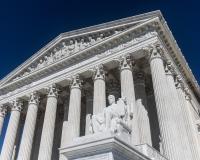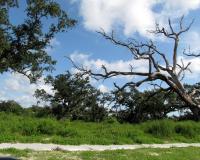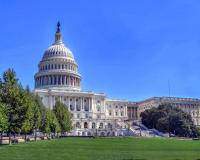
Vibrant Environment
Environmental Justice
All | Biodiversity | Climate Change and Sustainability | Environmental Justice | Governance and Rule of Law | Land Use and Natural Resources | Oceans and Coasts | Pollution Control

The Supreme Court heard two related cases this term that are not about pollution or natural resources but that nonetheless could undermine one of President Biden’s biggest environmental efforts, dubbed Justice40.

One of the first civilizations to arise after humankind left Africa was in a nearby region that is in present-day Iraq and parts of neighboring countries stretching to the Mediterranean Sea. It has been dubbed by chroniclers Mesopotamia, Greek for “the land between two rivers.” The Tigris and Euphrates valley was the setting for the biblical Garden of Eden and is aptly named the Fertile Crescent in history books today.

Candidly, I gave up making New Year’s resolutions long ago. We all know about the January spike in gym memberships that falls off a cliff come March. On the other hand, I always look forward to spending time in December looking back and pondering priorities for the year to come. Here are a few of the things starting to circle in my mind.

Innovations in U.S. environmental law traditionally occur at the state level, and environmental justice is no exception. Due to the highly polarized environment on Capitol Hill, current efforts to enact a federal EJ law have yet to survive the legislative process. One recent example was the Environmental Justice for All bill that did not even reach the House floor for a vote before the end of the 117th Congress session.

Managed retreat is deemed by most as a viable adaptation option to climate-related extreme weather events. Yet, the practice is controversial due to the negative impacts it can have on marginalized communities.

Passed on August 16, 2022, the Inflation Reduction Act commits nearly $370 billion in direct investment to address climate change and energy production.

An explosion of monitoring technologies, big data, expanded analytical abilities, and other technologies raises the possibility, albeit with caveats, that technological developments can help solve long standing environmental justice challenges. At ELI’s 7th GreenTech webinar on July 29, 2021, “Technology and Environmental Justice,” experts discussed how technology could play a role in key policies and programs.

The Biden Administration recently finalized the first phase of a two-part rulemaking process to reverse some of the Trump Administration’s revisions to CEQ rules for implementing NEPA. In mid-April, ELI hosted a panel to discuss how these new rules might alter federal agency reviews of climate change and environmental justice impacts.


This is the second of a two-part series of blog articles discussing CERCLA and environmental justice. Read Part I here.